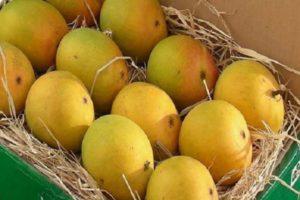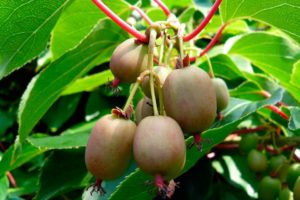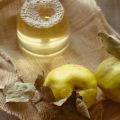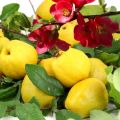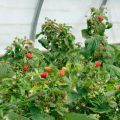How to plant and care for quince in the open field, breeding methods and pest and disease control
Planting and caring for quince in the open field is not difficult, and even a beginner in gardening can handle it. When planting, you should clearly follow the rules of agricultural technology and do not forget about leaving. After all, without this it is impossible to grow a good harvest.
What you need to know when planting quince
Before planting a quince seedling, it is important to learn all the details. The future yield, as well as the health of the tree, depends on the correctness of the event. First of all, it is important to study the requirements of the quince to the soil and which place to choose for planting.
How to choose a healthy and strong seedling
Only the healthiest and strongest seedlings are suitable for planting. Weak trees do not take root well, and in some cases do not root at all. The seedlings should have a well-developed root system. The roots are elastic and not dry. The stems are strong, do not break when bent and show no signs of damage. The main trunk is strong and thick.
Soil requirements
The root system of quince belongs to the surface type, therefore it is advisable to plant the plant on loamy soils. Sandy loam soils are also suitable, but the yield will be slightly worse. Fruit crops are also planted near the location of groundwater. In this case, the distance between the rhizome and groundwater should not be less than 1.5 m.

Choosing a suitable place
To obtain a rich harvest, quince is planted in open sunny areas. In the shade and even partial shade, the plant grows poorly and gives a meager harvest. It is not recommended to plant a tree in the lowlands and in places where water accumulates in the spring. Excessive moisture damages the root system.
How to plant a quince
It is quite simple to grow quince, the main thing is to follow the rules of agricultural technology. It is important to determine the timing of planting and study the technology of planting a seedling in a permanent place.
Optimal planting times
Quince is planted twice a year - in spring and autumn. Each seedling planting date has its own advantages.Many summer residents still do not agree on which season is the most optimal.
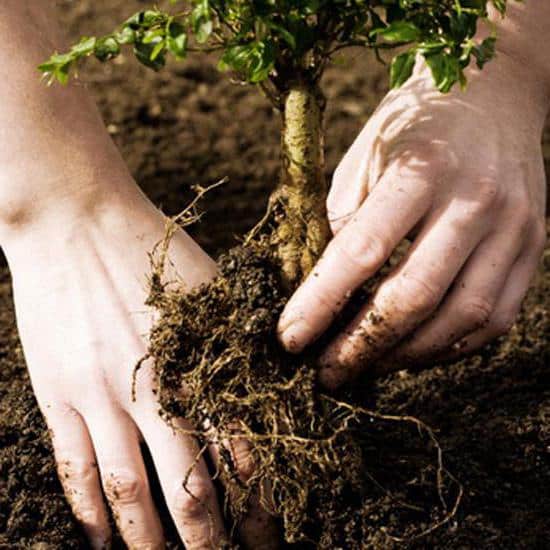
Spring
When planting in spring, the soil begins to be harvested in the fall. The principle of preparation is the same as for the autumn planting. Quince is planted after the ground is completely warmed up. Immediately before planting, the ground is slightly loosened. The advantage of spring planting is that the seedling does not have to survive the winter.
Fall
If the autumn period is chosen for planting quince, you should prepare the soil in the spring. The soil is dug up and organic fertilizing is applied. In the fall, they start planting. The optimal dates are September-October. The quince should be planted before the onset of cold weather. The advantage of autumn planting is that the seedling will have time to take root in a new place during the winter, and in the spring it will immediately enter the growth phase.
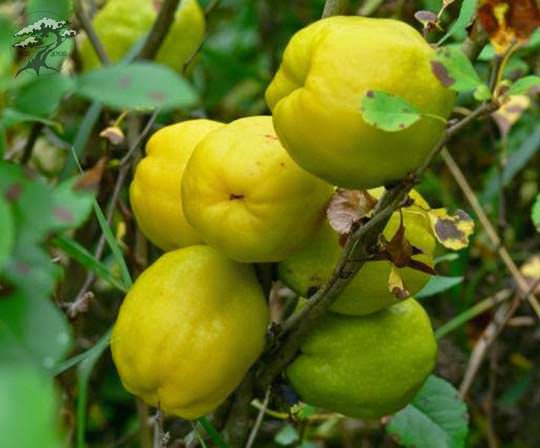
Disembarkation scheme and technology
The technology of planting quince is practically no different from planting other fruit crops. How to plant quince seedlings in the open field:
- Dig a hole to a depth of 1 m.
- Mix the topsoil with manure and wood ash.
- Drive a stake into the center of the pit.
- Place the seedling carefully and straighten the roots.
- Bury the hole with earth and lightly tamp the soil near the trunk.
- Tie the seedling to the stake for the first time, until it takes root in a new place.
At the end of planting, quince is abundantly watered with water heated in the sun.

Agrotechnics
Taking care of a culture is not that difficult. Although garden quince is rarely found in domestic summer cottages, its cultivation is no different from the cultivation of any other fruit crops. It is important to regularly feed the plant and carry out preventive procedures against diseases and insects.
Top dressing and watering quince at their summer cottage
Watering and feeding 4 times per season:
- The first time - during the formation of the kidneys.
- The second time is during the flowering period.
- The third time is when the fruit begins to pour.
- The latter is before the onset of cold weather during preparation for winter.
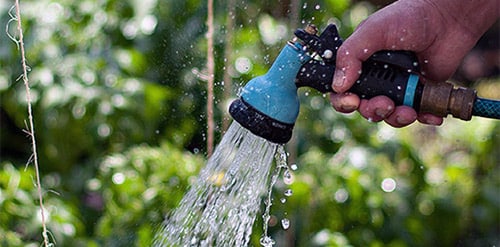
In the first half of the season, nitrogen-containing fertilizers are used. For example, ammonium nitrate or urea. In the second half of the season, quince needs potassium and phosphorus. Superphosphate and nitrophosphate are used as top dressing.
In addition, manure, compost, bird droppings or dolomite flour are added to the soil.
How to tie a quince in the first year of life
After planting, young quince seedlings are tied to a stake until they take root in a new place. The stake should be the same height as the tree. The trunk is tied up so that it does not bend, but stands straight.
Tree crown formation
An important stage in the cultivation of any fruit tree is crown formation.
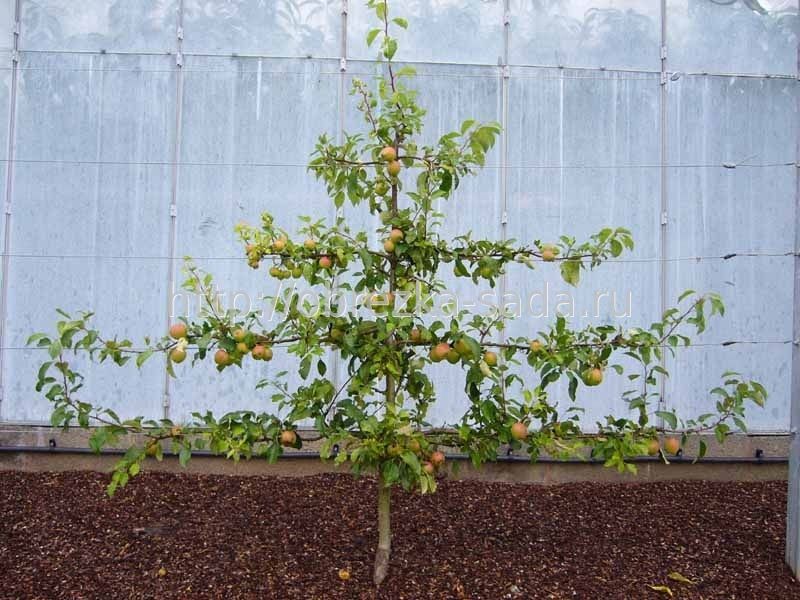
Cutting schemes and technology
The procedure is performed twice a season - in spring and autumn. Anti-aging pruning is carried out in the spring, and sanitary pruning in the fall. If necessary, additional summer pruning is carried out. Remove the stems only with a sharp pruner so that there are no creases. The cut points must be disinfected.
Period of work
Prune preferably on a warm, dry day. It is better to look at the weather forecast so that prolonged or heavy rains do not start a few days before and after the procedure. The most favorable time is considered to be the evening after sunset.
Spring molding
In spring, young shoots and part of the branches are cut off. 3-4 skeletal branches are left on the tree, the rest is cut off. If the quince variety is tall, part of the top is also cut off.
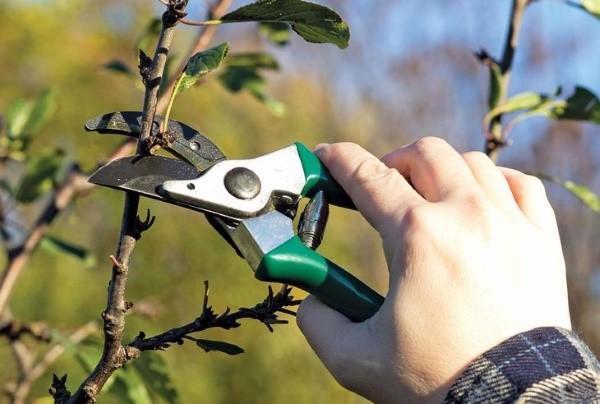
Summer
Summer pruning is carried out in the event that the tree is infected with any disease, and to prevent its development, it is necessary to remove part of the branches.
Autumn
Sanitary pruning is carried out in autumn. All dry and damaged branches are removed, leaving only healthy ones.
Mulching
Mulch the soil in the fall after harvest. The soil around the trunk is dug up and weeds are removed.Manure, peat or sawdust are used as mulch. The mulch layer should not be less than 15 cm.
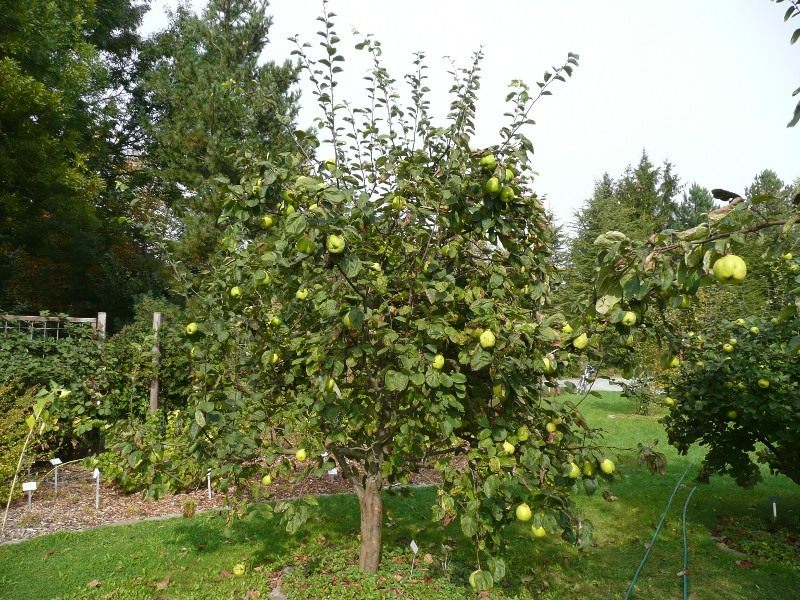
How a tree reproduces
How to grow quince from seeds? Many summer residents are interested in this issue. But quince can be grown not only from seeds. There are many methods of tree propagation.
Seeds
For an autumn planting, it is not necessary to wait several months for the seeds to prepare. Cut the largest and healthiest fruit from the tree. Leave it for a month to mature. After a month, remove the seeds, rinse them under water and dry. Seeds are planted directly into the ground. Plant and cover them with spruce branches. In the spring, small quince sprouts should appear in this place. When the sprouts grow up and are strong enough, they need to be planted from each other.
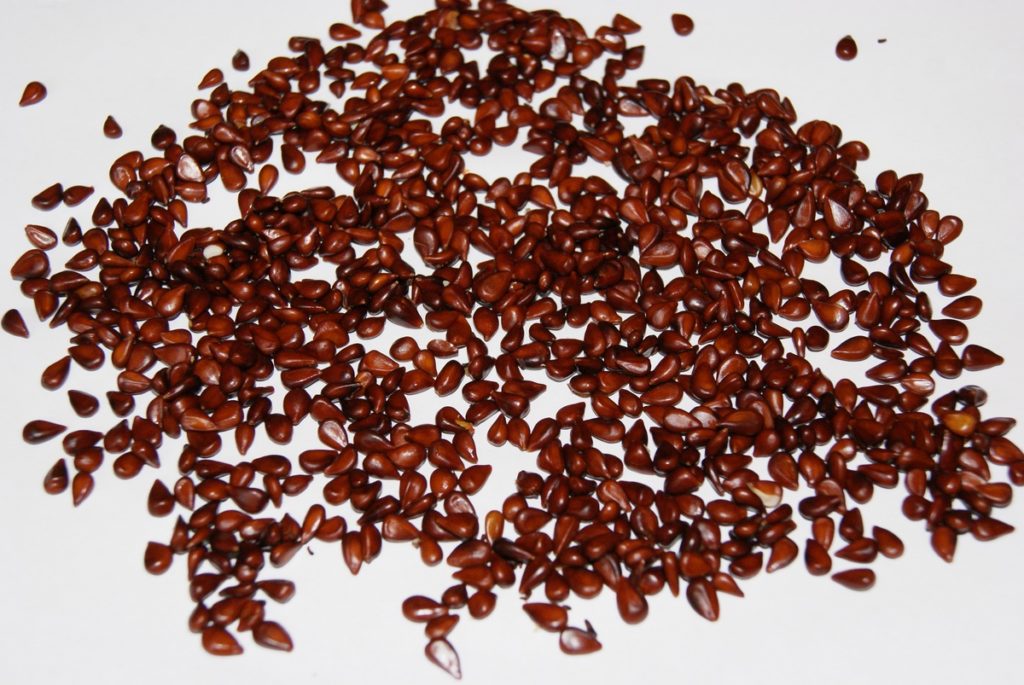
Root offspring
Another breeding method is by root suckers. Each tree has young shoots nearby, which gradually grow and become a full-fledged tree. To propagate quince with this method, it is enough to separate the root suckers from the mother tree and plant in a new place. This method is considered the easiest.
Layers
In the fall, you need to cut young shoots, the age of which does not exceed two years. Then they are bent to the ground and covered with soil. First, you should dig grooves with a depth of 5-9 cm and place shoots there. After the shoots are laid, they should be fixed. In the spring, roots will appear at the layers, and in the fall of the same year they can be planted in new places.
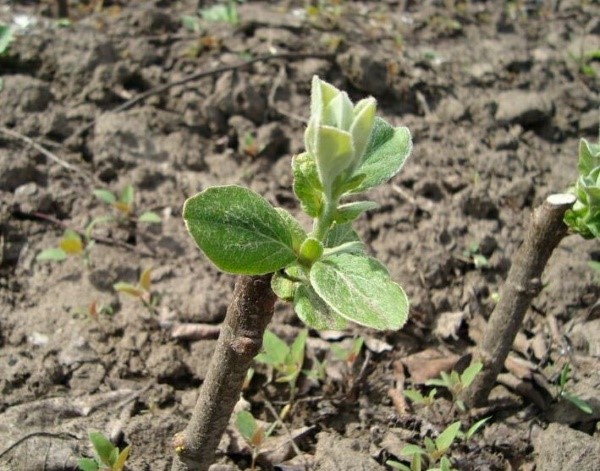
By cuttings
Propagated by quince and cuttings. This method is used if there is a goal to preserve the varietal characteristics of a particular tree. To harvest cuttings, young green shoots are cut from the tree. It is undesirable to use lignified shoots. The cuttings should be 20-25 cm long and each have 4-5 buds.
Cuttings are cut with a sharp pruner so that there are no creases. The lower cut is performed at an acute angle, and the upper one - at a right angle above the kidney itself. Before planting the cuttings in the soil, they are placed for a day in a solution that activates growth. Then the cuttings are planted in the ground. You can transplant to a permanent place in a year.
Vaccination
Growing this way is suitable for experienced gardeners. In most cases, quince or apple tree is used as a stock. A healthy twig without signs of damage with several buds is taken as a scion. Reproduction of quince by grafting is carried out in the spring, after warm weather is established.
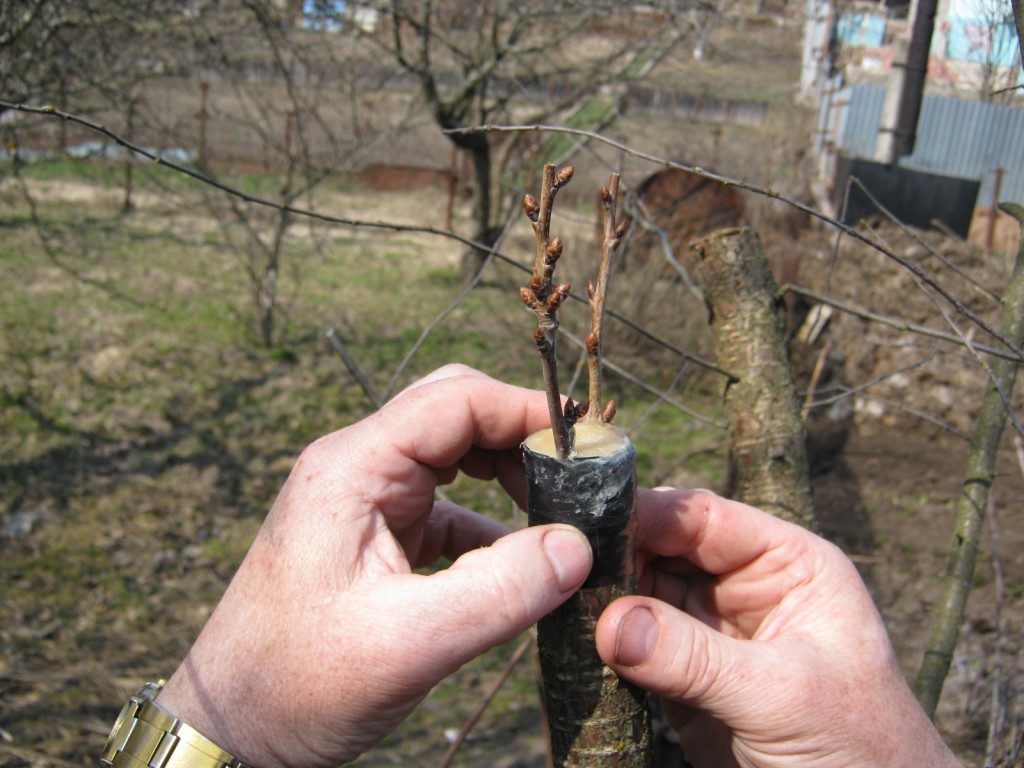
Quince diseases and the fight against them
To find out how to properly deal with quince diseases, you need to study what diseases most often affect trees. Treatment should be aimed not only at eliminating the cause of the disease, but also at preventing further emergence of disease.
Brownish leaves
When brownish leaves dry, and also small brown spots appear on them. Then they fall off. In order to cure the quince, after flowering, they are treated with a solution of Bordeaux liquid.
Gray rot
This disease is characterized by the appearance of necrosis - large brown spots on the shoots and leaves, which rapidly increase in size. If lingering precipitation began on the street, the affected areas are covered with a white fluffy bloom. The danger of gray rot is that its pathogen can spread to any plants in the garden.
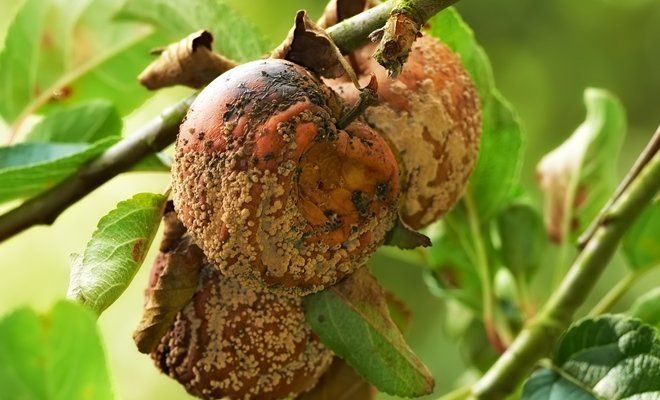
To combat gray rot, drugs "Topaz", "Kuproksat" are used. As a preventive measure, you need to adhere to the following rules:
- Regularly destroy weeds from the site.
- After harvesting, treat the trees with Bordeaux liquid or copper-containing chemicals.
- In spring, water the soil around the trunk with copper-containing preparations.
These measures will be enough to prevent gray rot from appearing on the site.
Rust
Another disease that occurs on quince is rust. Signs of rust:
- The appearance of orange tubercles on the top of the leaf.
- Pustules form on the bottom.
- The spots turn into stripes as the disease develops.
- The leaves turn yellow and fall off en masse.
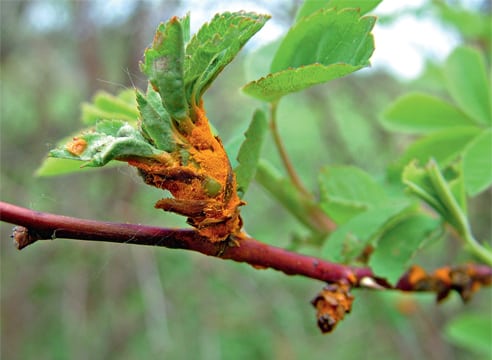
To combat rust, trees are treated with fungicides after leafing out. There should be two treatments with a break of two weeks.
Powdery mildew
The first signs of powdery mildew are white or red bloom on the tips of annual shoots. As the disease progresses, the plaque thickens and takes on a brown tint with black dots. Shoots do not develop, the leaves are deformed, and the ovaries are massively crumbled. To combat powdery mildew after flowering, trees are treated with fungicides. After 2-3 weeks, the treatment is repeated.
Rotting ovaries
Another reason why quince blooms, but does not bear fruit, is the rotting of the ovaries. Ovaries begin to rot on the tree for a variety of reasons. Initially, dark spots appear on the leaves, which spread throughout the entire leaf as the disease progresses. Then the spores fall into the ovaries, and the inflorescences begin to fall off.

You need to fight decay with the help of the drug "Fundazol". First, all dry and damaged branches are cut off and dry fruits are destroyed. The culture is treated with the drug during and after flowering of inflorescences.
Moniliosis
This disease affects trees that grow in climatic zones with wet springs. The disease initially affects fruits with mechanical damage. Brown spots appear on the peel, which quickly increase in size. The pulp becomes loose, then the fruits fall off. To combat moniliosis, drugs "Abiga-peak", "Rovral", Bordeaux mixture and copper sulfate are used.
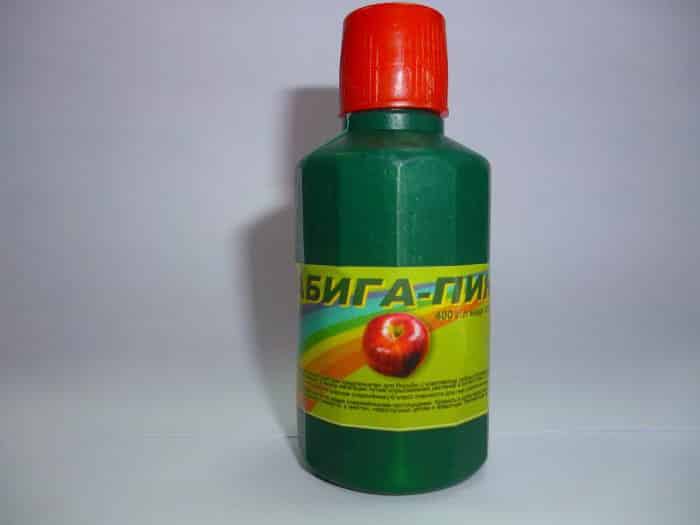
Pests and methods of prevention
But it's not just disease that affects culture. Harmful insects can often be found on the tree. To combat them, chemicals and folk methods are used.
Leaf dominant moth
The leaf-dominant moth is often found on quince. The insect larvae, which feed on the leaves of the tree, are especially dangerous for the tree. If larvae of leaf-dominating moths appear on the culture, the leaves first become light and then fall off. You can get rid of the insect with the help of Fundazol.

Fruit mites
Fruit mites suck juice from young shoots, which subsequently fall off. Due to the pest, yield decreases, and the tree stops growing. One of the signs of the appearance of a fruit mite is the appearance of sticky spots on the tree. Urea will help get rid of the insect. This agent is sprayed in the fall after harvest.
Apple moth
The apple moth multiplies rapidly, and several generations can change at once over the summer. To destroy the pest, the plants are treated with Lepidocid or Dendrobacillin.

Aphid
The danger of aphids appearing on fruit trees lies not only in the fact that they suck the juice from the leaves, but also carry viral diseases. These diseases can no longer be cured. To combat aphids, a soap solution is used, as well as insecticides. As you know, the first sign of the appearance of pests is the appearance of ants on the site, so they will also have to be dealt with.
What can be grafted on quince
Some varieties of pears and apples can be grafted onto quince. They also plant quince.
When a young tree begins to bear fruit
Quince begins to bear fruit quite early after planting. Depending on the method of planting, the timing of fruiting may vary. Seed-grown trees begin to bear fruit in the 4-5th year.

Seedlings grown by cuttings start bearing fruit earlier, 2-3 years after planting. Flowering begins later than other crops, when the threat of spring frosts has passed completely.
Ripening and harvesting
For those summer residents who plant quince for the first time and harvest, such questions as how to store and when to harvest become more relevant than ever. Quince is one of the latest fruits, so you can prepare for harvesting only in October. And sometimes the collection of fruits stretches to November. If meteorologists predict an early winter, then you need to harvest the crop without waiting for the onset of frost. Even if the fruits do not have time to ripen to the end.
The first sign that it's time to harvest is that the fruits began to crumble en masse. But waiting for the moment until everyone falls off is not worth it. Such fruits are not stored for a long time. It is best to harvest the quince while most of the fruit is hanging from the tree.
Store the crop in a cool room with high humidity. If there are many fruits, they should be stored in sand or sawdust. It is undesirable to keep the fruits next to the pear, such a neighborhood contributes to the fact that the quince quickly ripens and deteriorates.
